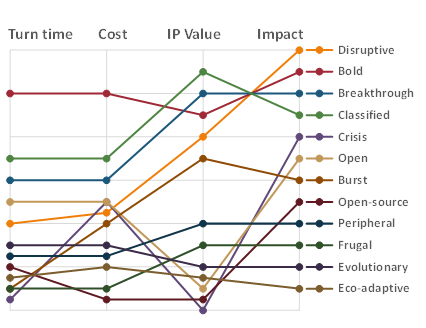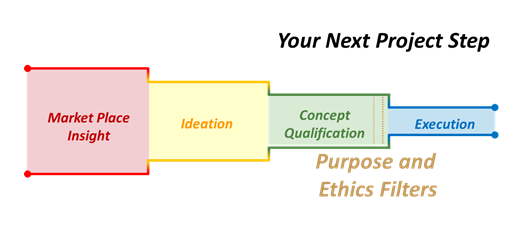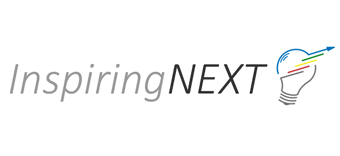Most common innovation classification is process, product, service, or business model. However, You can choose how you wish to classify innovation, as long as it is novel and adds value. I have 15 types for you to start building your own library, and then you can be innovative about adding ‘Distinct Innovation.’
Evolutionary Innovation (Small improvement)
When you make an incremental change to an existing product, service, or a process to stay competitive. It typically draws upon user feedback, lessons learned, or quick improvements just to go one-up in the marketplace. Example a digital camera with more megapixels or optical zoom.
Eco-adaptive Innovation (Translation)
When you take a successful product from one ecosystem and adapt it to work in another. Examples: adapting a German Porsche car for US roads, or a US refrigerator modified for Indian households.
Peripheral Innovation (Adjacent)
When you create new products as peripheral devices, accessories, and adjacent services. Examples: ultralight tripod, or a thin carry case for the camera.
Crisis Innovation (Emergency)
When you have extremely limited time to solve a problem, possibly to save a few human lives at stake. Examples: Return of Apollo 13 in 1970, Rescue of chili miners in 2010.
Burst Innovation (Rapid Fire)
When you have a business crisis on hand, with some direct impact on employment, service deliveries, or the environment. Examples: a bailout of a reputed airline heading into bankruptcy.
Bold Innovation (Multi-Faceted and Integrated)
When the effort is enormous in magnitude, requiring serious integration of multiple innovations to come together. Examples: Human mission to Mars, or a floating city.
Frugal Innovation (Resource Starved)
When the budget is low, and quality is of little consequence. Examples: you create a makeshift rooftop rack for your car to carry stuff for vacation, and now it lasts forever. We can also call this a ‘Hack Job’.
Open Innovation (External Participation)
When you engage external entities or individuals outside the boundaries of an organization without serious constraints on knowledge sharing to accelerate the creation of new products. Examples: Procter & Gamble’s program called Connect and Develop. At times, multiple parties may come together to share solution development.
Classified Innovation (Secrecy)
When you work on something highly confidential and you must not disclose it even to the closest of your relations. Examples: Strategic Defense Initiative or Skunkworks of Lockheed Martin.
Breakthrough Innovation (Significantly New)
When there is a high degree of change or impact, related to an organization, process, technology, product, or service. Examples: Paying for insurance by the mile based on a plug-in telematics device. Breakthrough innovation is at the other end of the continuum to evolutionary or incremental innovation.
Disruptive Innovation (Turning Point)
When a significant fraction of potential customers adopts something new or when a fundamental breakthrough or value proposition leads to a change in lifestyle. Disruptive innovation will often hurt established businesses. Example Netflix killed Blockbuster. There is another term called Radical innovation. Different people use it interchangeably with Breakthrough or Disruptive innovations. Is it somewhere in between?
Responsible Innovation (Socially Conscious)
When an approach to innovation anticipates and assesses potential implications and societal expectations; intending to foster the design of inclusive and sustainable research. In some sense, this distinguishes Good from Bad innovation; akin to saying, ‘do the right thing.’ I believe, most of the innovation types discussed above should also attempt to be a Responsible type except Crisis Innovation, when human lives are at risk.
Open-source Innovation (Social & Free)
When creating a new product design for social good, using openly available resources, and freely giving away the design so anyone can produce for use where they need and when. In some sense, it is a combination of Crisis, Frugal, and Responsible innovations with no business model associated with it. The recent pandemic brought out a lot of open-source innovation to address a shortage of hand sanitizers and ventilators.
Dark Innovation (Unwanted)
This is exactly the opposite of responsible innovation. This is about new products or new use of an existing product with a purpose to hurt people, their property, their reputation; or to hurt a community, faith, country, or even deliberately impact the environment or planet sustainability. The intent is important here. Many innovations provide an opportunity for dark applications that are illegal or unethical. That does not make the innovations ‘dark innovation’. Example: 9/11 Terrorist Action.
The unintentional side effect due to lack of awareness of a well-intentioned innovation is not to be confused with dark innovation either. However, once you become aware, you need to activate your moral compass.
Distinct Innovation (You name it)
It appears that we can put any adjective ahead of the term ‘innovation’ to describe the innovative activity or context or outcome, with the sole purpose of being specific. You can think of and define ‘Free Innovation’, ‘Fast Innovation’, ‘Academic Innovation’, ‘Sharp Innovation’, ‘Bull**** Innovation’, or maybe not.

Various forms of innovation discussed in this section can be compared on a few parameters at some contextual relative levels. The identification of parameters that could provide a meaningful comparison across classifications may not be an exact science. After discussions with a few expert peers, we narrowed it to Turn time, Cost, Intellectual Value, and Impact. The above visual shows these in relative terms just to provide a perspective, which is not based on data.
In the Context of the Automobile Industry
Let’s just look at the most familiar industry – automobile and connect a few of the classifications above. We could think of mobility, if we wish to go back in time, and project into the future. Over 5000 years ago, man learned how to ride a horse for mobility (disruptive). The uses spread to the agriculture and battlefield (eco-adaptive). Then came the chariot (radical) around 2000 B.C., which allowed multiple warfighters to move swiftly with the power of multiple horses. Four-wheeled wagons were used in bronze age with Europe providing a comfortable seating(evolutionary) as there is historical evidence that the platforms were suspended elastically. Carriage, coaches, and wagons went through evolutionary innovations for comfort, steering, and stability for many centuries. These basic forms also went through a series of eco-adaptive and peripheral innovations for various uses and terrains.
A breakthrough or a disruption happened when the horse was replaced by a steam engine, sitting underneath the carriage, in early machines. Series of evolutions started moving the entire thing towards automobiles of today. Comfort, safety, stability, control, and cost have been the key drivers. Every year, every new model has a few new features (evolutionary). The introduction of an Airbag could be considered a breakthrough for safety. Going from 4 to 6 airbags is evolutionary. An active braking system is a breakthrough technology today. When you take a car designed for the US market to India, you have to redo the suspension for Indian roads and change to right-hand drive (eco-adaptive). Design of rooftop rack for sports package, or a tow dolly, are peripheral innovations.
There were a lot of Burst Innovations in the industry, when President Obama offered bailout packages to the big auto manufacturers in 2009. Yes, they were evolutionary at the technology level, but the speed and scope were to help recover from a business crisis. Innovations in design methods and assembly lines can be categorized as process innovations. A brand new powerful automated manufacturing machine could be a breakthrough innovation for the machine manufacturer, and process innovation for the automobile manufacturer. When there is a machine tool breakdown causing a delivery pressure, a machinist quickly hacks a new tool to get going. This will be a frugal innovation, or workbench innovation, Car lease, rental car, and ride-sharing, belong to the business model innovation. Creative arrangements with suppliers can be process or business model innovations.
When the manufacturer is called in to secretly modify an existing car model for military applications with certain capabilities for the battlefield, it would be a classified innovation. On the other spectrum, if a car company openly solicits ideas for their next model, this would be an open innovation.
When material scientists came up with fiber-reinforced plastics, it was a breakthrough for them. However, the application in automobile bumper is evolutionary for the car. The revisions to design, manufacturing, and quality checks in the factory for such a bumper are process innovations. Most car users won’t even notice the new material in the bumper until they have to take the car to the body shop, who might create an innovative business model to repair it.
When a bad guy uses the car as a car bomb or to ram through a crowd, it is an example of a dark innovation. When Toyota had an issue with sticky pedals and lives were being lost, the solution required a crisis innovation. The Eisenhower Interstate Highway System authorized in 1956 is an example of a bold innovation. Tesla is more of a breakthrough innovation. All through the evolution of the automobile industry, manufacturers have been doing responsible innovations – reducing emissions and improving passenger safety.
There have been a series of breakthroughs in other sectors such as visual recognition, cloud computing, networking, GPS, that are finding their way into automobile safety and control, bringing us to a driverless car. We can call it a disruptive innovation because it is going to change our lifestyle altogether. The ripples may adversely affect many other sectors such as parking lots, highways, Dept of Motor Vehicles, insurance, highway patrol, emergency rooms, injury lawyers, and others.
Thus, we could say that the mobility can be characterized by a few desirable aspects such as speed, safety, stability, cost, and comfort. These are continuously pushing changes in design, manufacturing, and business models. The changes can be small, large, or lateral. I would say, driverless cars are short-lived. Once mobility gets automated, there is no reason to stick to the ground. We will go for personal drones. The technology is there. We just need a bold vision, safety regulations, and an ethical pursuit.
In the Context of the Recent Pandemic
The world has seen a significant amount of innovation over the last few months (as I write this in the middle of 2020) in trying to survive the Coronavirus pandemic. This has mostly been in the broad category of Crisis Innovation to save lives such as the rapid design of ventilators from locally available stock and 3D printed face shields. A low-cost ventilator (~$4) in India is an example of a frugal innovation. Adapter that enables one ventilator to work on 2 patients is an eco-adaptive innovation. Making that ventilator design or digital files for 3D printable parts available to the public is soliciting open-source innovations. Soliciting ideas through web-portals for solutions for devices and vaccines is another example of an open innovation. Deployment of Naval assets Mercy and Comfort (large medical carrier class ships) to Los Angeles and New York is eco-adaptive. Adapting hydroxychloroquine for Coronavirus might be another eco-adaptive. The public is waiting for a breakthrough innovation in the vaccine. Everybody is creating their designs of face masks from fabric at home, which is in some sense an example of workbench or point of action innovation.
For further details
If you wish to learn the steps required to execute any of these, please refer to my book “Inspiring Next Innovation Value Chain.” Available on Amazon


